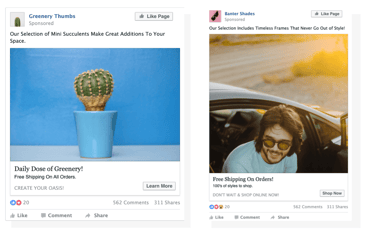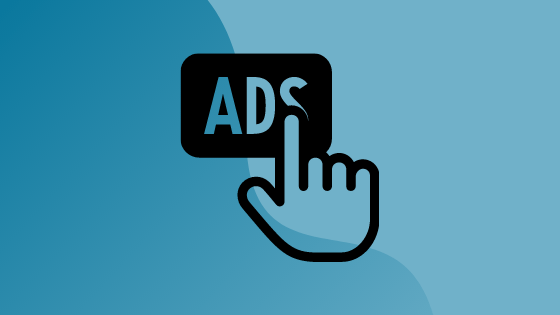Greatly affecting the marketing world and how businesses are able to advertise on Facebook and Instagram, the recent iOS 14 update has been producing limitations for advertisers in its quest to protect consumer privacy. Below, we’ll discuss some iOS 14 advertising best practices. Marketers can employ these to remain successful with their campaigns on Facebook and Instagram despite recent changes on iOS 14.
What changed?
Historically, Facebook advertising has been an effective way for marketers to reach prospects, gain insights on target audiences, perform research, retarget ads, and more. Not to mention, advertising on the platform has been growing steadily. Facebook is still expecting to record a 12% year-over-year growth in advertising revenue in 2022 despite the setbacks caused by the iOS 14 update.

At the same time, there has been a larger conversation throughout the tech sphere around increased digital privacy and protecting consumers from unwanted surveillance and tracking. One of the more notable companies to take a hard stance on this issue has been Apple, the creator of the iPhone, which is used by about 47% of the country’s smartphone users.
Thus, much of the major changes in Apple’s iOS 14 update are due to the push for consumers to have more control over the information that they are willingly–or even accidentally–sharing with companies online. With this update, Apple is aiming to limit how much advertisers are allowed to track user activity. In the past, this has led to highly-targeted Facebook advertising to consumers. This could be based on their browsing behavior, in-app purchases, and more.
For tracking purposes, Apple assigns each user with an IDFA, or Identifier for Advertisers. This is a totally unique and random number that is attached to each iOS device. It can also be re-set by users at any time. Uses of the IDFA include tracking browser usage and behavior within apps, but it does not contain any personally identifiable information.
However, with the iOS 14.5 update that went live last April, Apple switched the default setting for IDFA to “off” for all devices. Users are now prompted to manually allow each individual app to turn on IDFA. Currently, it’s estimated that only 4% of Apple users have opted in to such tracking. As one could assume, this is proving to be an uphill battle for marketers employing Facebook advertising who previously enjoyed easy access to such data. Not to mention, Facebook itself is also feeling the hit from this update. With campaign performance down, marketers are choosing to take their advertising dollars elsewhere.
While viewed in certain spheres as a big win for consumers, marketers are struggling to achieve the same performance on campaigns that they’ve seen in the past with Facebook advertising while still remaining cost-effective. Particularly, features regarding targeting, reporting, and optimization have all taken major hits since the change. This is negatively impacting how marketers can advertise and track the performance of paid advertising on Facebook and Instagram.
Tips & tricks for advertising post-iOS 14
Even with the recent updates, there are still some iOS 14 advertising best practices for marketers to optimize campaigns and successfully utilize Facebook advertising. To begin with, advertisers can first verify their domain in the Facebook Business Manager. This will help show that they are a legitimate business. After this simple initial step, they should consider implementing some of the tactics discussed below.
New ads creative
Though not an overly technical way to re-assess your Facebook advertising campaigns under the new update, marketers can create new and improved ads for better performance. Between revamped copy and better creative, for advertisers wanting to boost ROAS after the iOS 14 update, this could be the missing link. As always, make sure to run A/B testing to see what your audience responds best to. Also, don’t be afraid to mix it up with different types of videos and concepts.
Re-engagement campaigns
Lookalike audience capabilities and re-targeting performance may be down due to a lack of access to third-party data. However, advertisers can still benefit from re-engagement campaigns given that this is proprietary data from Facebook once a user is logged in and interacting with the platform. This can include users who have engaged with your page, ads, or content in the past that you can later target ads to.
Whitelisting
Additionally, you may try your luck with new audiences through whitelisting. As mentioned above, lookalike audience performance has taken a hit with the new iOS 14 update. However, you can perform a similar process using the follower data of certain influencers. The process is more involved than what we’ll discuss here. However, in short, whitelisting allows you to run ads under an influencer’s handle to reach their audience and amplify your campaigns. While it isn’t a perfect replacement to running campaigns to lookalike audiences, it is a good alternative and one of the iOS 14 advertising best practices for marketers to employ.
Conversions API
Lastly, for those advertisers who have access to developers or are familiar with sophisticated technology, they can integrate the Conversions API onto their page. This is a workaround for the limited Pixel tracking that advertisers have experienced post-update. The rollout of this feature has been Facebook’s main defense against Apple’s iOS 14 update. It tracks conversions through your site’s server rather than through the user’s browser, like with the Pixel. Additionally, it can operate regardless of the customer’s browser settings.
Regardless on where you stand on this new update, it is certain that the push for increased consumer privacy and app transparency isn’t going away anytime soon. The iOS 14.5 update has proven to be challenging for marketers. Ad campaign performance is down, and it’s becoming more expensive to reach the same results as before.
The list provided here of iOS 14 advertising best practices is not comprehensive, though it is a good start for advertisers looking for tips and tactics to combat recent changes. As trends in Big Tech and consumer advocacy continue to redefine the business world, marketers will keep getting creative with workarounds and how to create solutions to keep Facebook advertising efforts effective. If you’re looking to optimize Facebook advertising campaigns for your business in the post-iOS 14 world, request a free demo with Springbot today.




